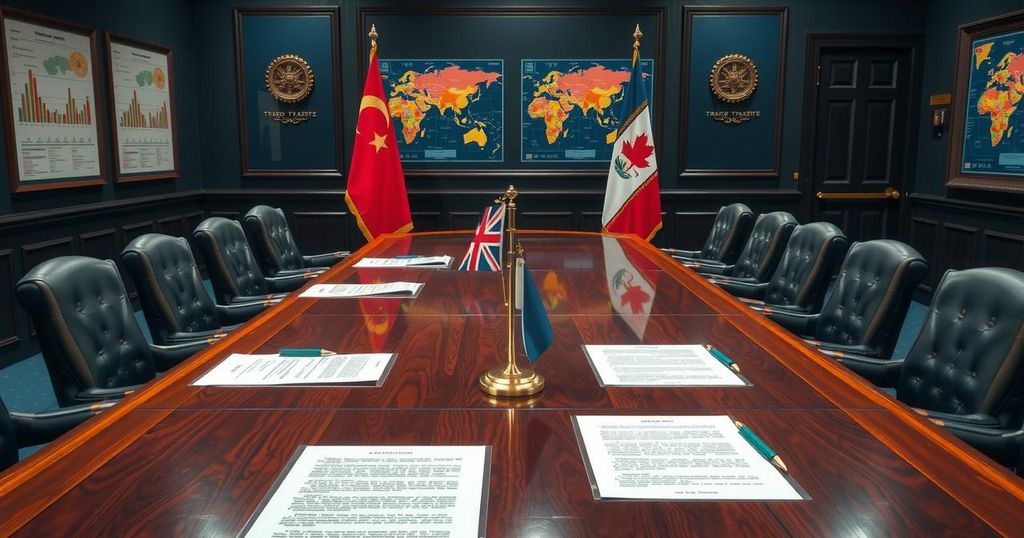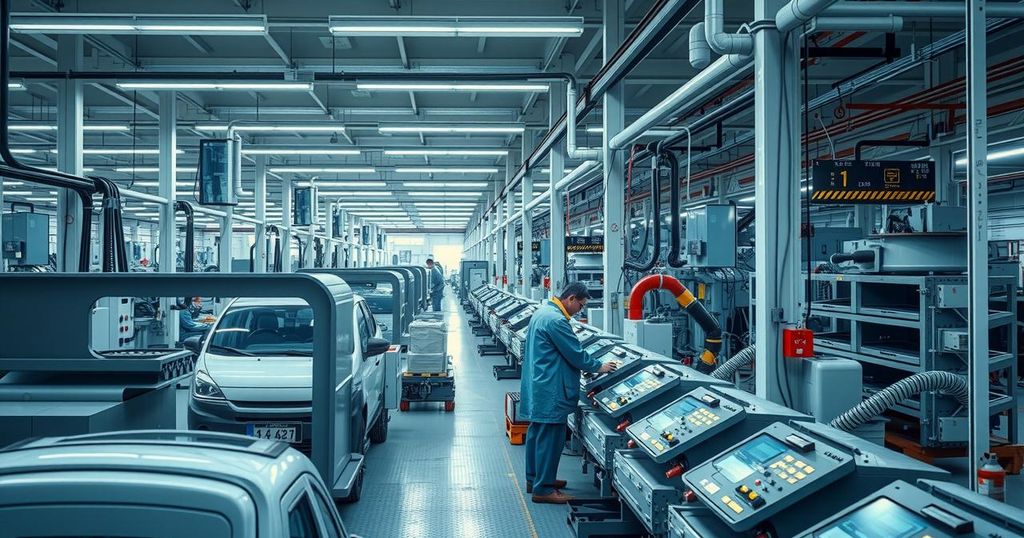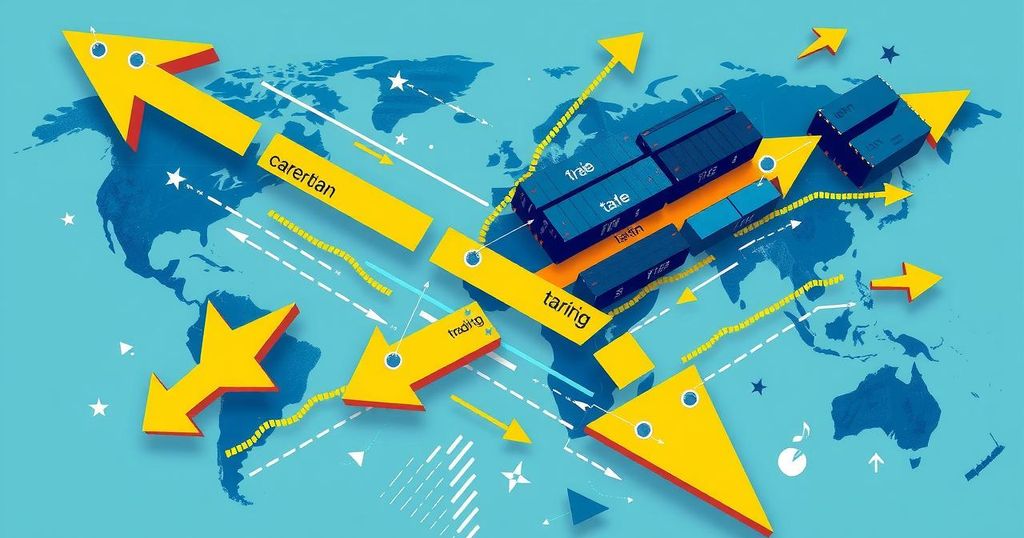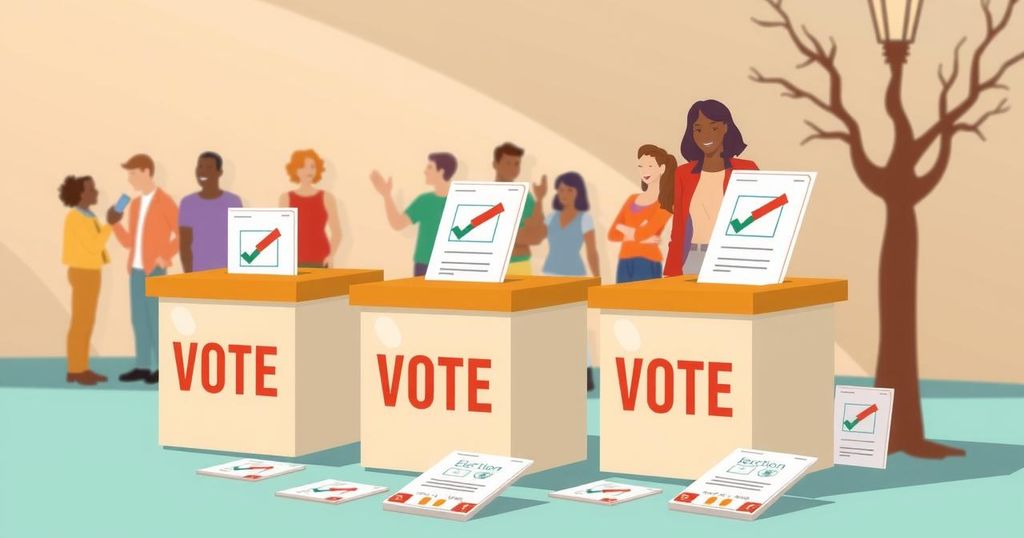The meeting between Indian Minister Piyush Goyal and USTR Jamieson Greer focused on reciprocal tariffs and the BTA, aiming for completion within months. Goyal emphasized India’s principles for the agreement, while Trump’s administration stressed the need for tariff reductions and a comprehensive trade deal. Challenges regarding India’s high tariffs could impact negotiations.
The recent meeting between India’s Commerce and Industry Minister Piyush Goyal and the United States Trade Representative (USTR), Jamieson Greer, focused on reciprocal tariffs and the initial phase of a bilateral trade agreement (BTA). These discussions are crucial as the U.S. plans to implement reciprocal tariffs starting April 2, which impacts India significantly.
Ambassador Greer remarked on the productive nature of the meeting, emphasizing ongoing discussions regarding reciprocal trade, expanding market access, and President Trump’s America First Trade Policy. Minister Goyal confirmed that they engaged in a forward-looking conversation on the BTA, asserting India’s commitment to principles such as ‘India First’ and the Comprehensive Strategic Partnership. This meeting marks a significant step in the bilateral discussions that started last week.
In a prior joint declaration, Prime Minister Narendra Modi and President Trump expressed their objective to finalize the BTA within seven to eight months. The agreement aims to enhance market access, diminish tariff and non-tariff barriers, and promote supply chain integration between India and the United States.
India is actively working to finalize its proposals for the BTA, which includes identifying items where India may reduce tariffs, thereby protecting the country from the impact of reciprocal tariffs. President Trump indicated that India had agreed to tariff cuts, while U.S. Secretary of Commerce Howard Lutnick expressed an interest in a comprehensive trade deal, highlighting that discussions may need to occur on a product-by-product basis, a process that could span years. Despite India’s hopes for preferential treatment, Trump has made it clear that the high tariff structure will preclude special concessions for India.
In conclusion, the discussions between India and the United States regarding reciprocal tariffs and the bilateral trade agreement signify significant diplomatic engagement. With an aim to finalize the BTA within months and address tariff concerns, both nations strive for enhanced economic collaboration, although challenges remain regarding India’s high tariff structure as articulated by President Trump. The outcome of these negotiations will shape future trade relations between the two countries.
Original Source: www.business-standard.com




